Beam Shaping for Wireless Optical Charging with Improved Efficiency
Abstract
:1. Introduction
2. System Setup
3. Results
4. Conclusions
Author Contributions
Funding
Acknowledgments
Conflicts of Interest
References
- Garnica, J.; Chinga, R.A.; Lin, J. Wireless Power Transmission: From Far Field to Near Field. Proc. IEEE 2013, 101, 1321–1331. [Google Scholar] [CrossRef]
- Fisher, T.M.; Farley, K.B.; Gao, Y.; Bai, H.; Tse, Z.T.H. Electric vehicle wireless charging technology: A state-of-the-art review of magnetic coupling systems. Wirel. Power Transf. 2014, 1, 87–96. [Google Scholar] [CrossRef]
- Lu, X.; Wang, P.; Niyato, D.; Kim, D.I.; Han, Z. Wireless Charging Technologies: Fundamentals, Standards, and Network Applications. IEEE Commun. Surv. Tutor. 2016, 18, 1413–1452. [Google Scholar] [CrossRef] [Green Version]
- Zhou, J.; Zhang, B.; Xiao, W.; Qiu, D.; Chen, Y. Nonlinear Parity-Time-Symmetric Model for Constant Efficiency Wireless Power Transfer: Application to a Drone-in-Flight Wireless Charging Platform. IEEE Trans. Ind. Electron. 2019, 66, 4097–4107. [Google Scholar] [CrossRef]
- Dai, J.; Ludois, D.C. Single active switch power electronics for kilowatt scale capacitive power transfer. IEEE J. Emerg. Sel. Top. Power Electron. 2014, 3, 315–323. [Google Scholar]
- Sakai, N.; Itokazu, D.; Suzuki, Y.; Sakihara, S.; Ohira, T. One-kilowatt capacitive Power Transfer via wheels of a compact Electric Vehicle. In Proceedings of the 2016 IEEE Wireless Power Transfer Conference (WPTC), Aveiro, Portugal, 5–6 May 2016; pp. 1–3. [Google Scholar]
- Jawad, A.M.; Nordin, R.; Gharghan, S.K.; Jawad, H.M.; Ismail, M. Opportunities and Challenges for Near-Field Wireless Power Transfer: A Review. Energies 2017, 10, 1022. [Google Scholar] [CrossRef]
- Abou Houran, M.; Yang, X.; Chen, W. Magnetically Coupled Resonance WPT: Review of Compensation Topologies, Resonator Structures with Misalignment, and EMI Diagnostics. Electronics 2018, 7, 296. [Google Scholar] [CrossRef] [Green Version]
- Sasaki, S.; Tanaka, K.; Maki, K. Microwave Power Transmission Technologies for Solar Power Satellites. Proc. IEEE 2013, 101, 1438–1447. [Google Scholar] [CrossRef]
- Shimamura, K.; Sawahara, H.; Oda, A.; Minakawa, S.; Mizojiri, S.; Suganuma, S.; Mori, K.; Komurasaki, K. Feasibility study of microwave wireless powered flight for micro air vehicles. Wirel. Power Transf. 2017, 4, 146–159. [Google Scholar] [CrossRef]
- Jin, K.; Zhou, W. Wireless Laser Power Transmission: A Review of Recent Progress. IEEE Trans. Power Electron. 2019, 34, 3842–3859. [Google Scholar] [CrossRef]
- Khalighi, M.; Gabriel, C.; Hamza, T.; Bourennane, S.; Léon, P.; Rigaud, V. Underwater wireless optical communication; recent advances and remaining challenges. In Proceedings of the 2014 16th International Conference on Transparent Optical Networks (ICTON), Graz, Austria, 6–10 July 2014; pp. 1–4. [Google Scholar]
- Kim, S.-M.; Kwon, D. Transfer Efficiency of Underwater Optical Wireless Power Transmission Depending on the Operating Wavelength. Curr. Opt. Photonics 2020, 4, 571–575. [Google Scholar]
- Duncan, K.J. Laser based power transmission: Component selection and laser hazard analysis. In Proceedings of the 2016 IEEE PELS Workshop on Emerging Technologies: Wireless Power Transfer (WoW), Knoxville, TN, USA, 4–6 October 2016; pp. 100–103. [Google Scholar]
- Zhou, Y.; Miyamoto, T. 200 mW-class LED-based optical wireless power transmission for compact IoT. Jpn. J. Appl. Phys. 2019, 58, SJJC04. [Google Scholar] [CrossRef]
- Uchiyama, N.; Yamada, H. Proposal and demonstration of LED optical wireless power-transmission systems for battery-operated small electronic devices. Jpn. J. Appl. Phys. 2020, 59, 124501. [Google Scholar] [CrossRef]
- Hirota, M.; Iio, S.; Ohta, Y.; Niwa, Y.; Miyamoto, T. Wireless power transmission between a NIR VCSEL array and silicon solar cells. In Proceedings of the 2015 20th Microoptics Conference (MOC), Fukuoka, Japan, 25–28 October 2015; pp. 1–2. [Google Scholar]
- Kim, S.-M.; Choi, J.; Jung, H. Experimental demonstration of underwater optical wireless power transfer using a laser diode. Chin. Opt. Lett. 2018, 16, 80101. [Google Scholar] [CrossRef]
- Höhn, O.; Walker, A.W.; Bett, A.W.; Helmers, H. Optimal laser wavelength for efficient laser power converter operation over temperature. Appl. Phys. Lett. 2016, 108, 241104. [Google Scholar] [CrossRef]
- Valdivia, C.E.; Wilkins, M.M.; Bouzazi, B.; Jaouad, A.; Aimez, V.; Arès, R.; Masson, D.P.; Fafard, S.; Hinzer, K. Five-volt vertically-stacked, single-cell GaAs photonic power converter. In Proceedings of the SPIE, San Francisco, CA, USA, 7–12 February 2015; Volume 9358. [Google Scholar]
- Raible, D.E. High Intensity Laser Power Beaming for Wireless Power Transmission; Cleveland State University: Cleveland, OH, USA, 2008. [Google Scholar]
- Yang, H.; Chu, D.P. Phase flicker optimisation in digital liquid crystal on silicon devices. Opt. Express 2019, 27, 24556–24567. [Google Scholar] [CrossRef] [PubMed]
- Yang, H.; Chu, D.P. Phase flicker in liquid crystal on silicon devices. J. Phys. Photonics 2020, 2, 032001. [Google Scholar] [CrossRef]
- Yang, H.; Chu, D.P. Digital phase-only liquid crystal on a silicon device with enhanced optical efficiency. OSA Contin. 2019, 2, 2445–2459. [Google Scholar] [CrossRef]
- Liu, S.; Qi, S.; Zhang, Y.; Li, P.; Wu, D.; Han, L.; Zhao, J. Highly efficient generation of arbitrary vector beams with tunable polarization, phase, and amplitude. Photonics Res. 2018, 6, 228–233. [Google Scholar] [CrossRef]
- Zhang, Z.; Liang, X.; Goutsoulas, M.; Li, D.; Yang, X.; Yin, S.; Xu, J.; Christodoulides, D.N.; Efremidis, N.K.; Chen, Z. Robust propagation of pin-like optical beam through atmospheric turbulence. APL Photonics 2019, 4, 76103. [Google Scholar] [CrossRef] [Green Version]
- Nie, J.; Tian, L.; Yue, S.; Zhang, Z.; Yang, H. Advanced Beam Shaping for Enhanced Underwater Wireless Optical Communication. In Proceedings of the 2021 Optical Fiber Communications Conference and Exhibition (OFC), San Francisco, CA, USA, 6–10 June 2021. [Google Scholar]
- Nie, J.; Tian, L.; Wang, H.; Chen, L.; Li, Z.; Yue, S.; Zhang, Z.; Yang, H. Adaptive beam shaping for enhanced underwater wireless optical communication. Opt. Express 2021, 29, 26404–26417. [Google Scholar] [CrossRef]
- Robertson, B.; Zhang, Z.; Yang, H.; Redmond, M.M.; Collings, N.; Liu, J.; Lin, R.; Jeziorska-Chapman, A.M.; Moore, J.R.; Crossland, W.A.; et al. Application of the Fractional Fourier Transform to the Design of LCOS Based Optical Interconnects and Fiber Switches. Appl. Opt. 2012, 51, 2212–2222. [Google Scholar] [CrossRef]
- Goodman, J.W. Introduction to Fourier Optics, 2nd ed.; McGraw-Hill Series in Electrical and Computer Engineering; McGraw-Hill: New York, NY, USA, 1996; ISBN 0070242542. [Google Scholar]
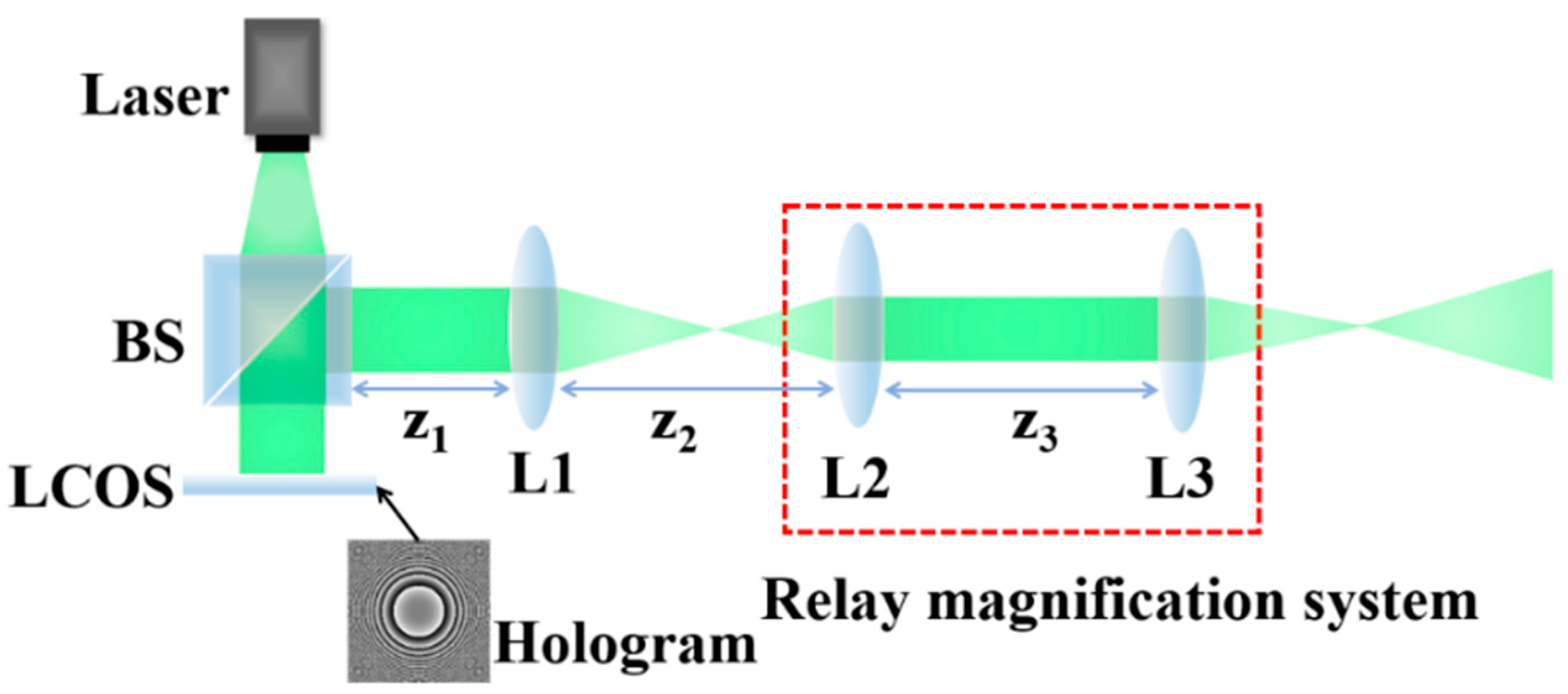

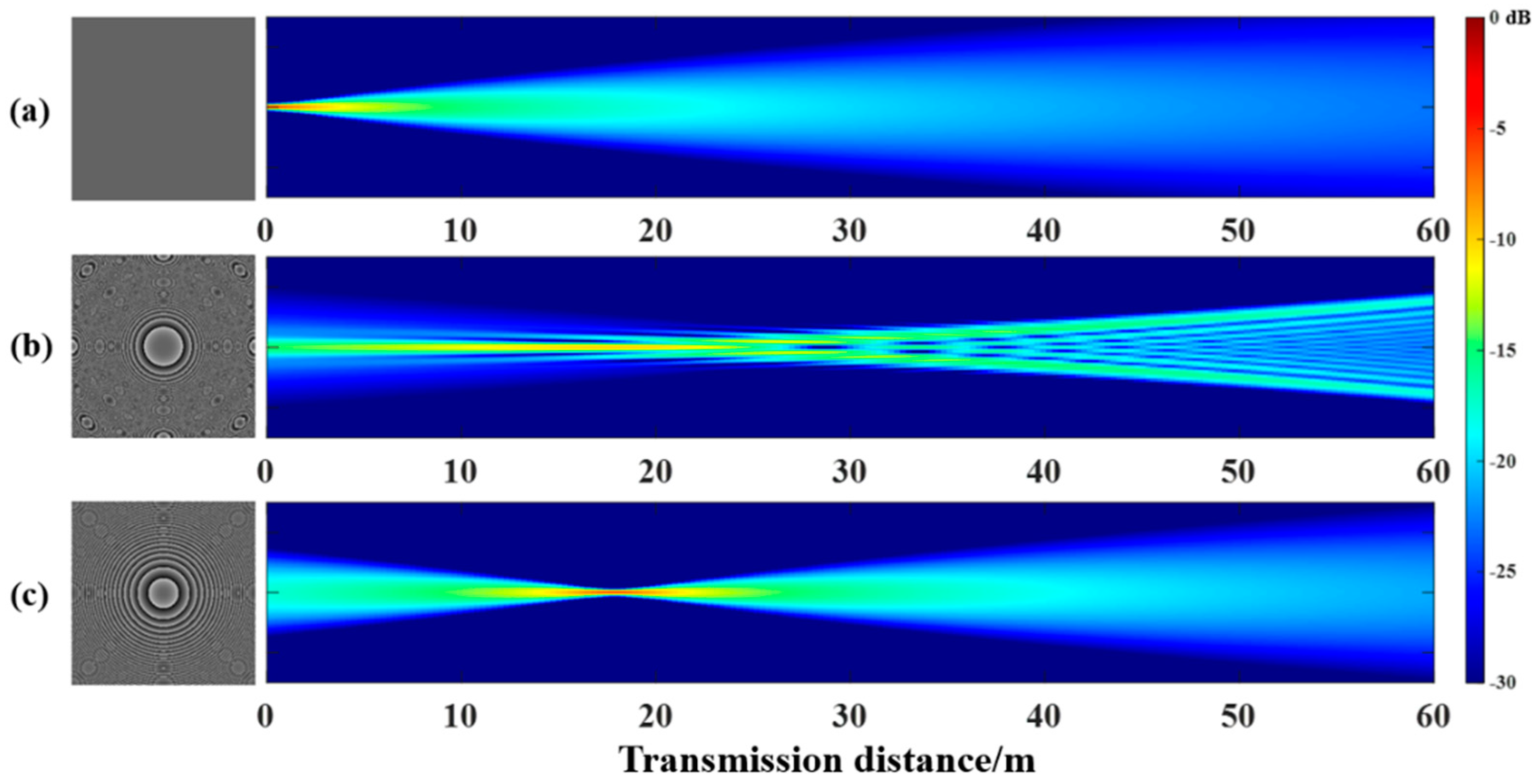
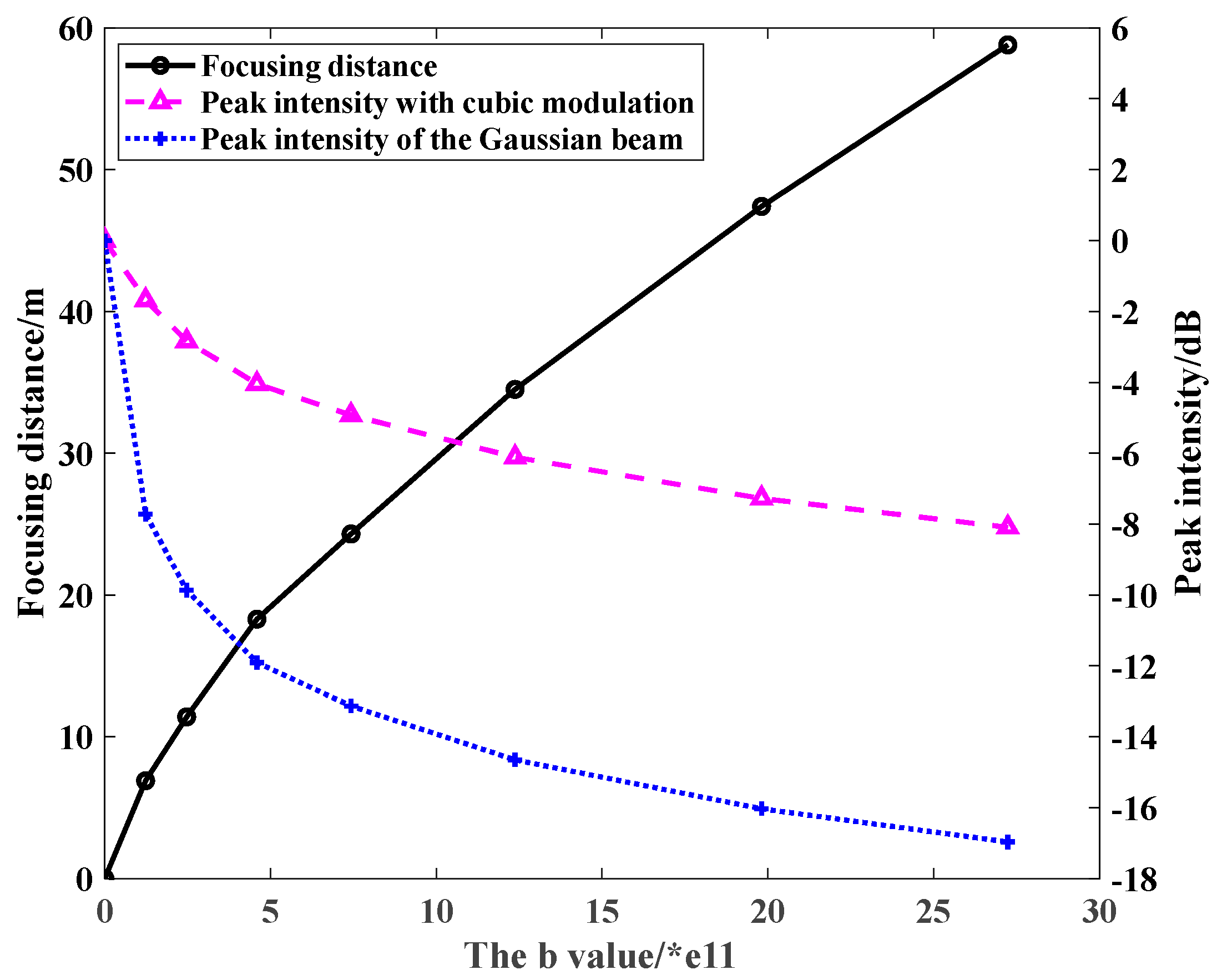
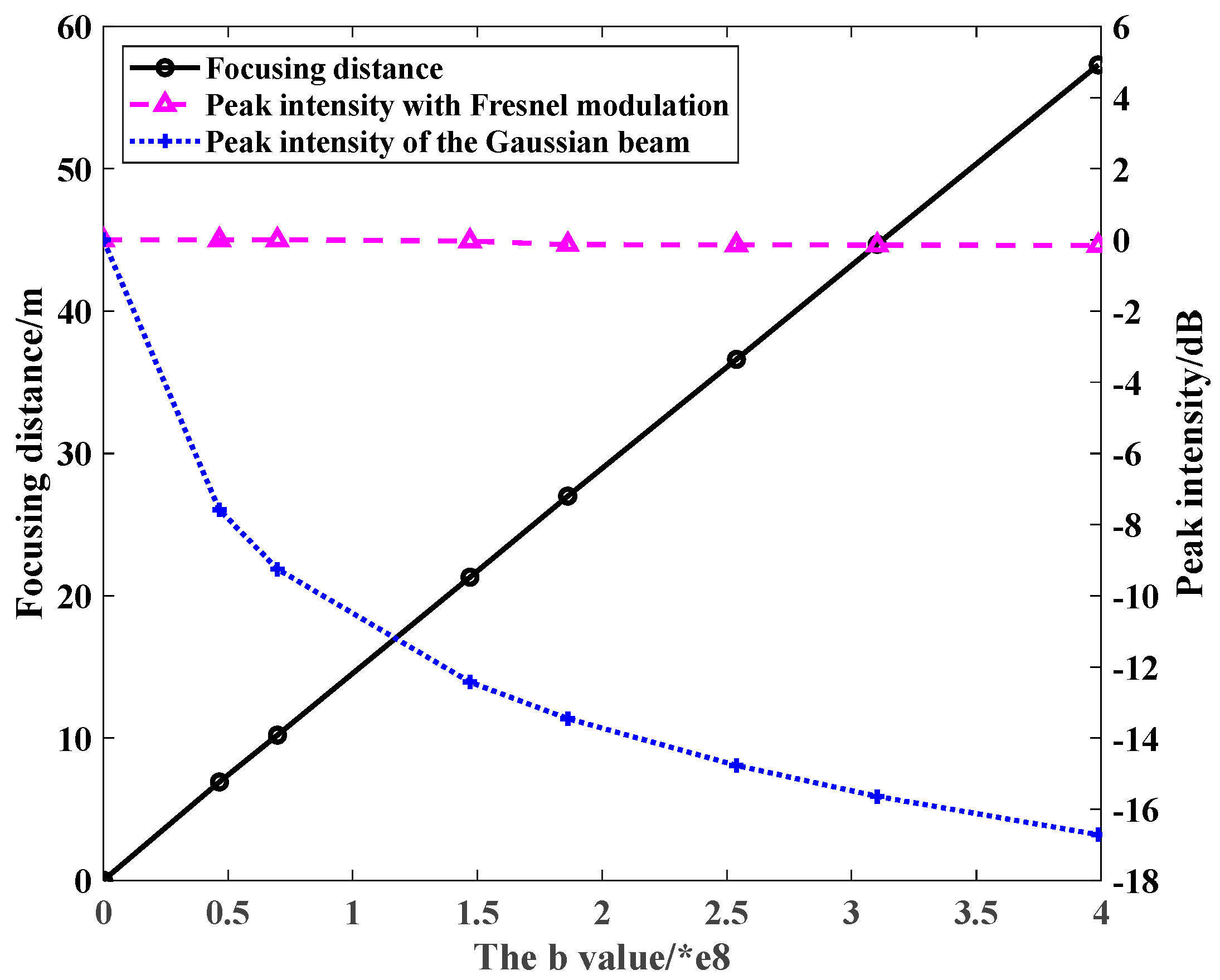
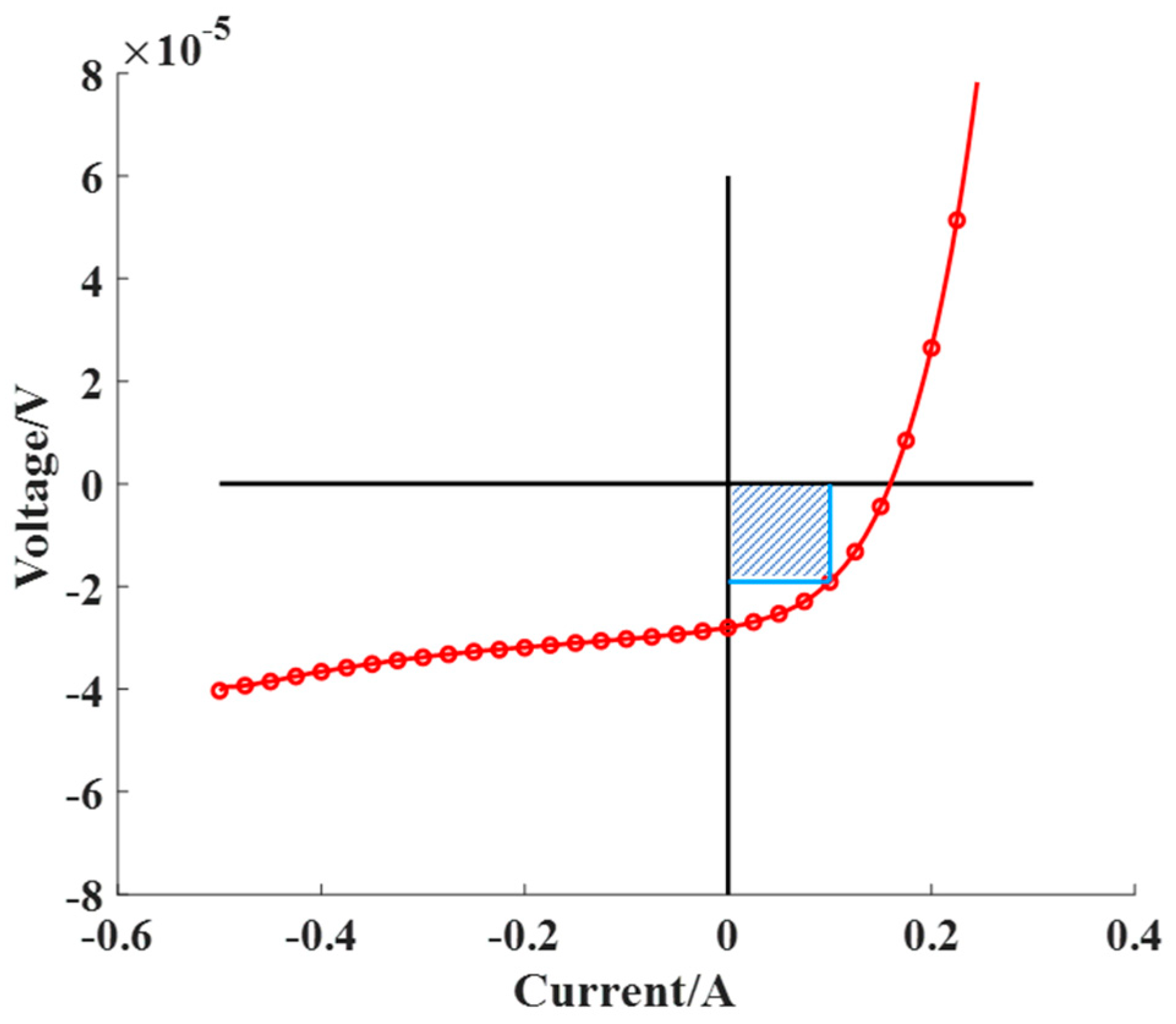
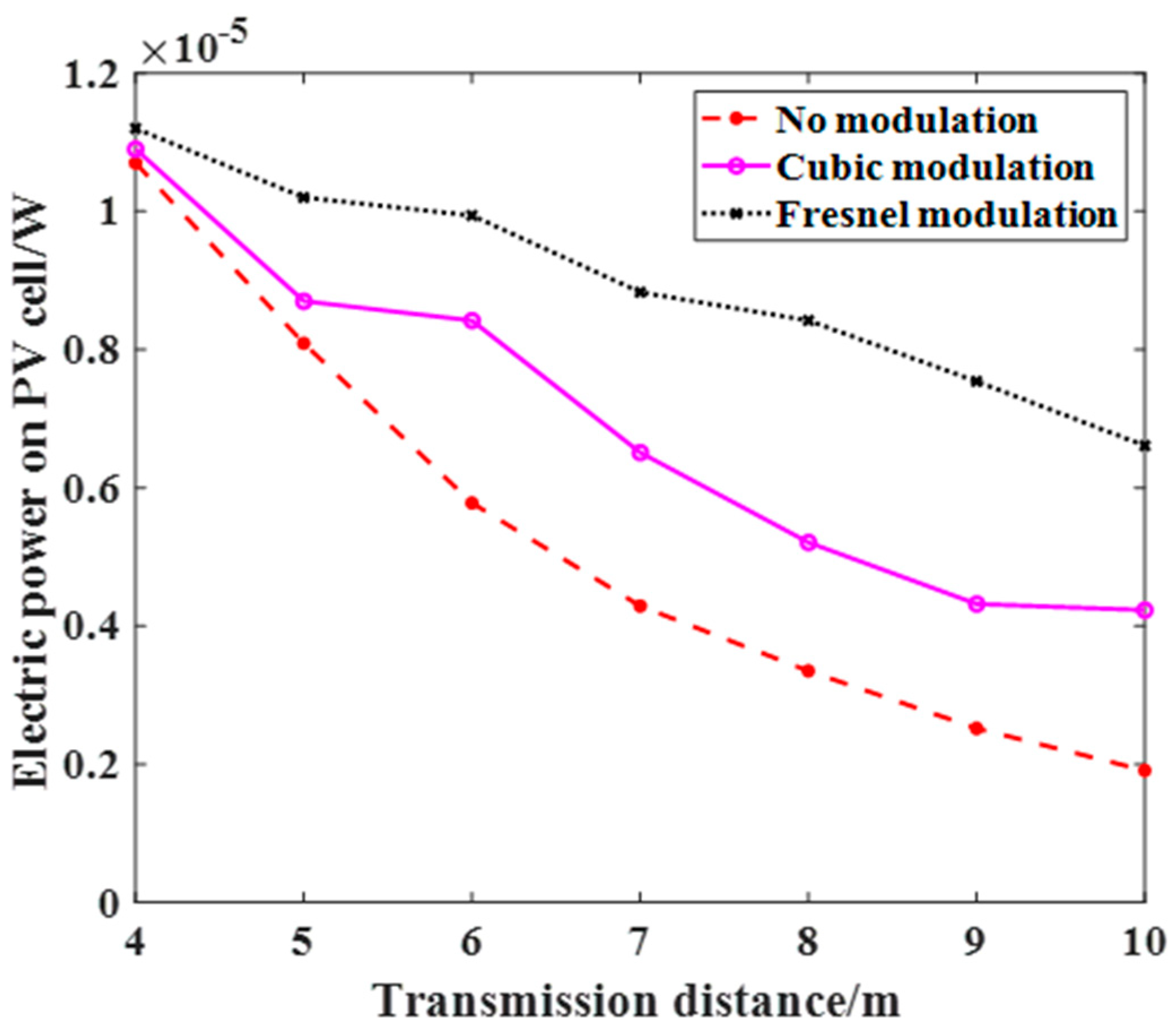
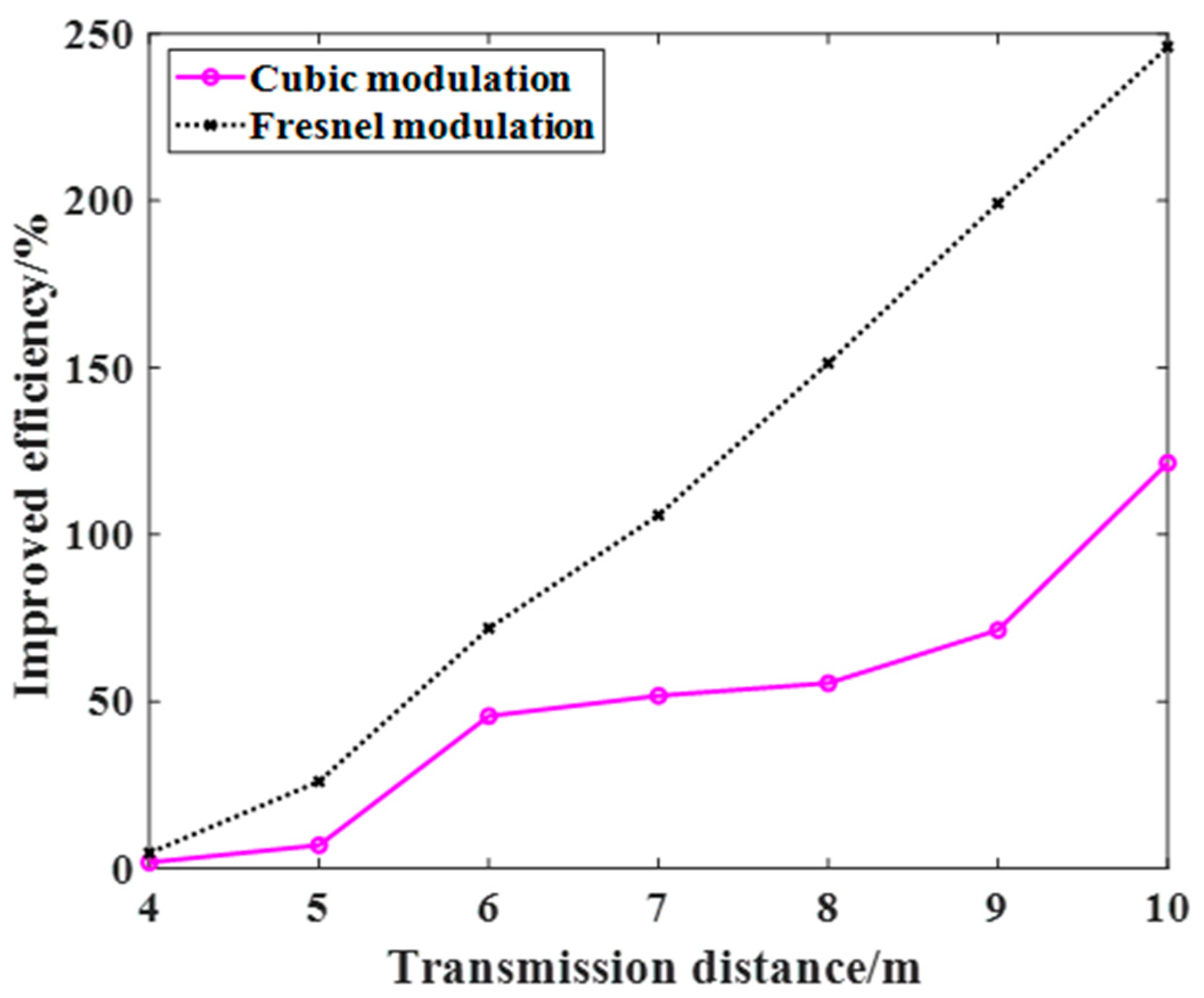
| Focusing Distance/m | ||
|---|---|---|
| 4 | 0.7324 | 0.4189 |
| 5 | 1.1719 | 0.6981 |
| 6 | 1.7578 | 0.9774 |
| 7 | 2.4902 | 1.2566 |
| 8 | 3.8086 | 1.5359 |
| 9 | 5.2734 | 1.8151 |
| 10 | 8.2031 | 2.0944 |
Publisher’s Note: MDPI stays neutral with regard to jurisdictional claims in published maps and institutional affiliations. |
© 2021 by the authors. Licensee MDPI, Basel, Switzerland. This article is an open access article distributed under the terms and conditions of the Creative Commons Attribution (CC BY) license (https://creativecommons.org/licenses/by/4.0/).
Share and Cite
Tian, L.; Nie, J.; Yang, H. Beam Shaping for Wireless Optical Charging with Improved Efficiency. Crystals 2021, 11, 970. https://doi.org/10.3390/cryst11080970
Tian L, Nie J, Yang H. Beam Shaping for Wireless Optical Charging with Improved Efficiency. Crystals. 2021; 11(8):970. https://doi.org/10.3390/cryst11080970
Chicago/Turabian StyleTian, Lei, Jiewen Nie, and Haining Yang. 2021. "Beam Shaping for Wireless Optical Charging with Improved Efficiency" Crystals 11, no. 8: 970. https://doi.org/10.3390/cryst11080970






